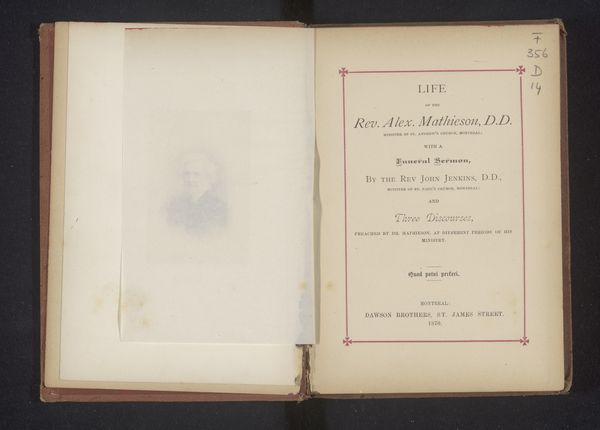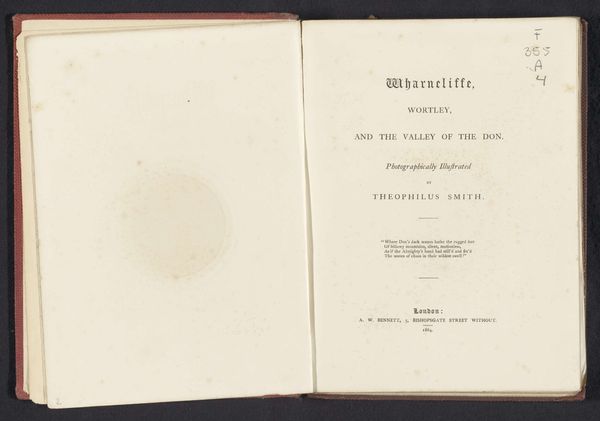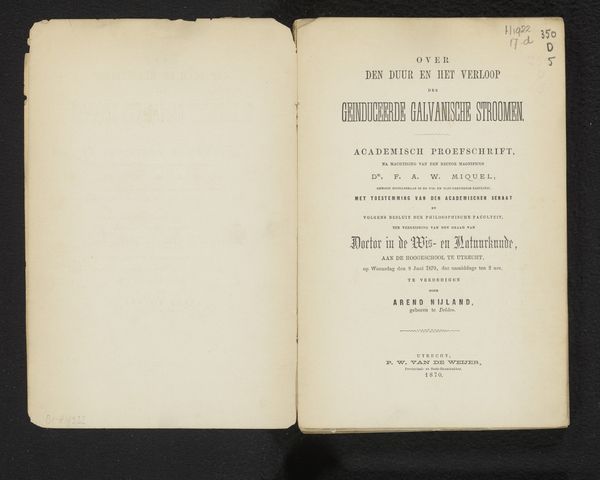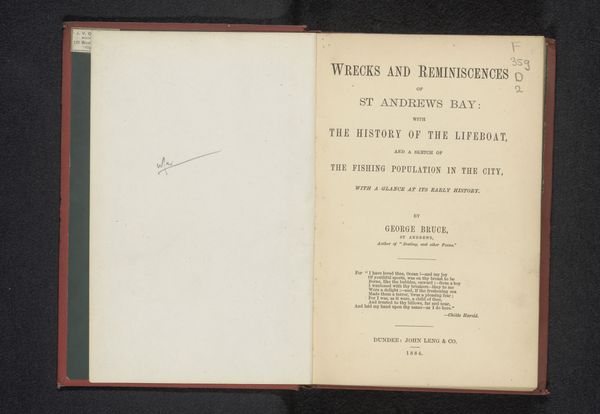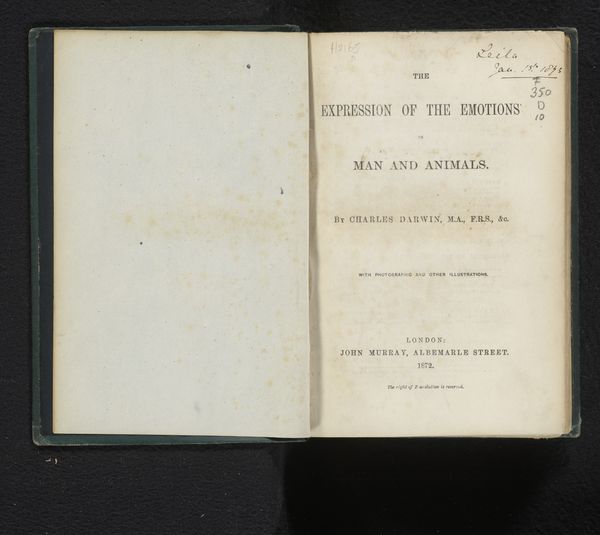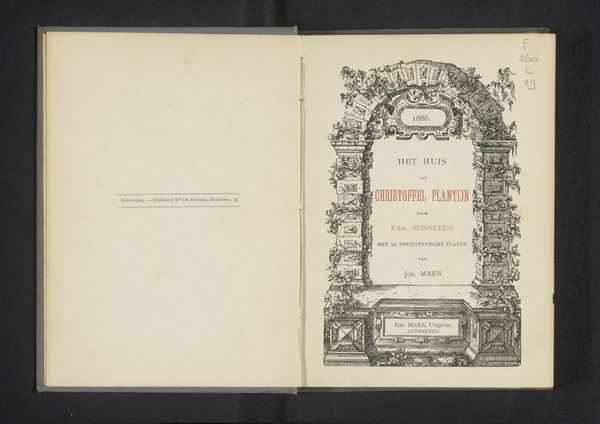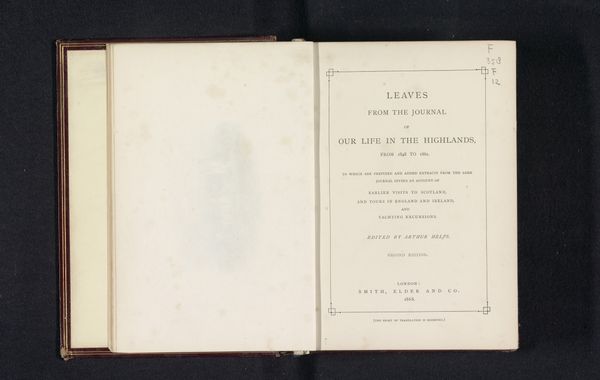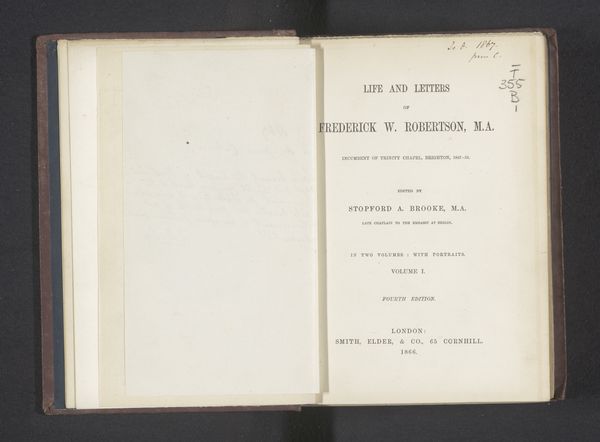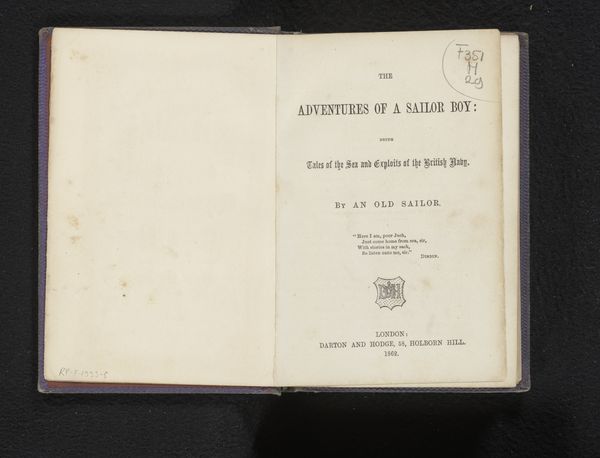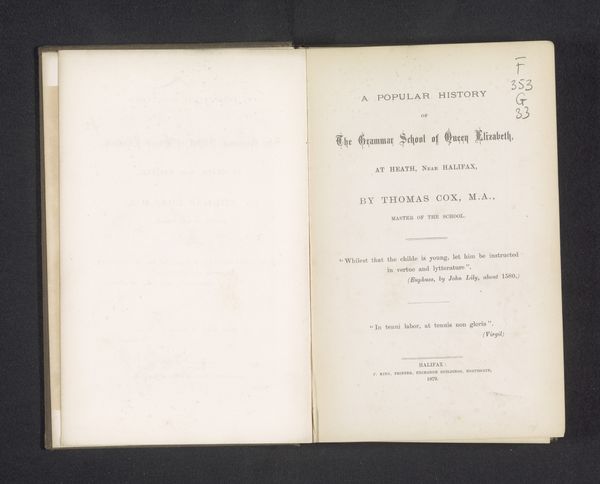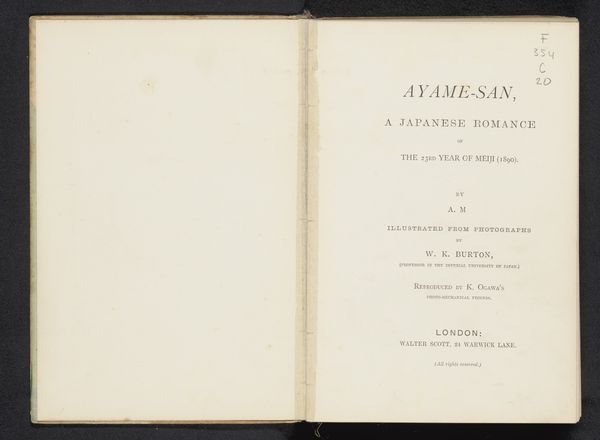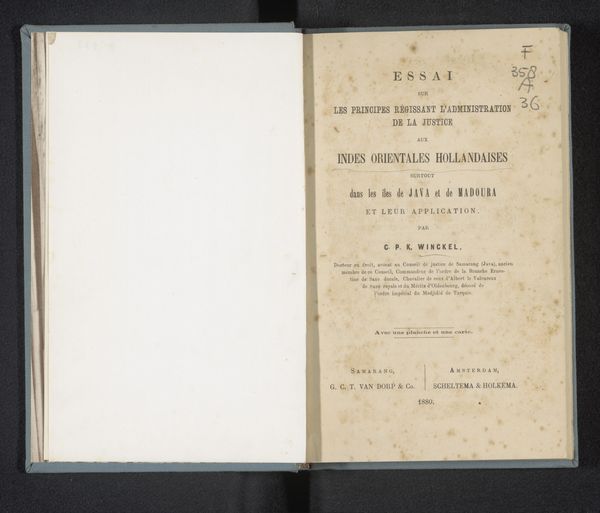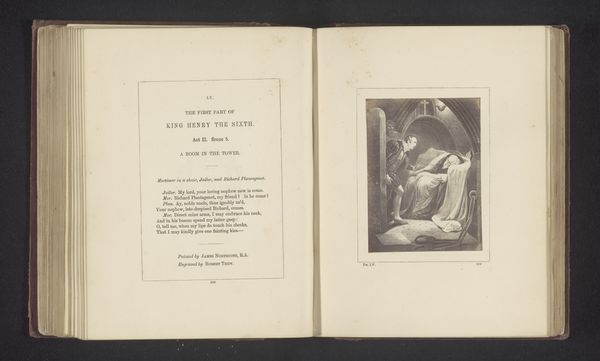
print, textile, paper, typography
textile
paper
typography
Dimensions height 171 mm, width 112 mm, thickness 51 mm
Curator: Today we're examining a print from 1873, "The Improvisatore: or, Life in Italy" attributed to Hans Christian Andersen, though with a translation by Mary Howitt. What are your initial thoughts? Editor: My immediate sense is of the weight of production—I mean physically, yes, this seems a small, portable book, but think of the labor! The typesetting, the printing itself, the binding. The materiality really grounds this idealized vision of Italy. Curator: Precisely. We need to consider the cultural context. Andersen’s works, while seemingly fanciful, were often commentaries on social disparities, gender roles, and the outsider experience. How does a translated and reproduced work then reflect Victorian England’s consumption of continental narratives? Editor: That translation layer is key. It mediates Andersen’s original labor through Howitt's hand, making it palatable, or marketable perhaps, to a British audience. Were the printing and binding processes standardized by this time? The book’s accessibility hinges on that. Curator: Victorian readership often exoticized Italian culture while simultaneously reinforcing its own perceived superiority. It raises the question, does this book uphold or challenge that established social and cultural dynamic? Is the “Life in Italy” depicted romantic, idealized, or critical? Editor: Or are we distracted from reality by beautiful craft? Is the binding itself meant to evoke the texture or visual of place – is the craft deployed to seduce us away from production realities? Curator: We should look into Mary Howitt’s choices as a translator and how the publishing house of Ward, Lock, and Tyler promoted this translation. What assumptions about gender roles, readership, or social hierarchies shaped this publication? Editor: Agreed. And what were the prevalent paper-making methods? Was the paper locally sourced? The fibers used really inform us of production limitations in play. This, I would posit, adds dimensions to how Italian lifestyle has been consumed, by whom, and by what means. Curator: Precisely. We began simply appreciating this book as artifact, and we end with considering material histories that both influenced and reveal this intricate cultural dance between text and reader. Editor: Indeed, a reminder that even the most seemingly ephemeral or fantastical text is, at its core, a very grounded object.
Comments
No comments
Be the first to comment and join the conversation on the ultimate creative platform.
